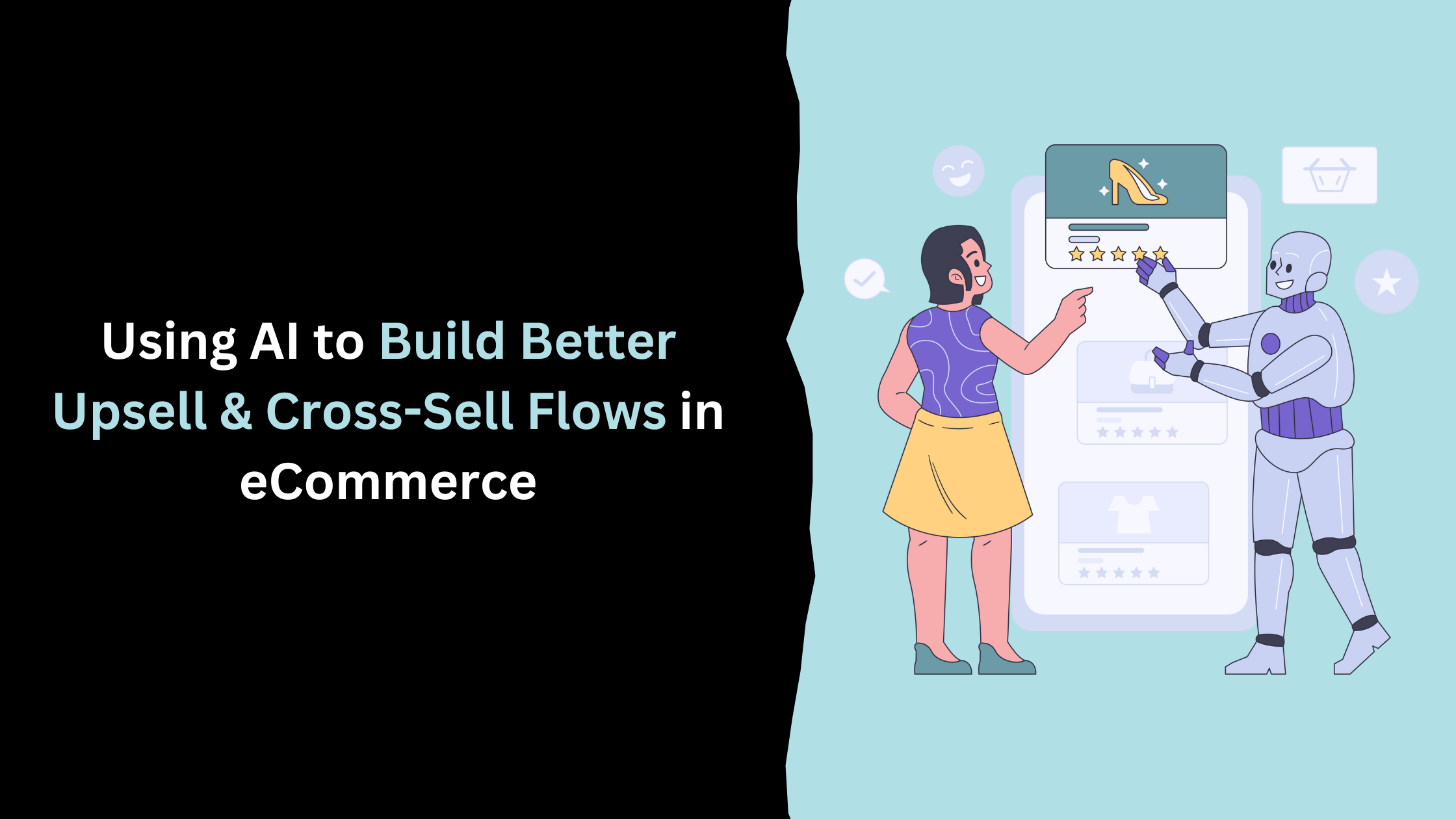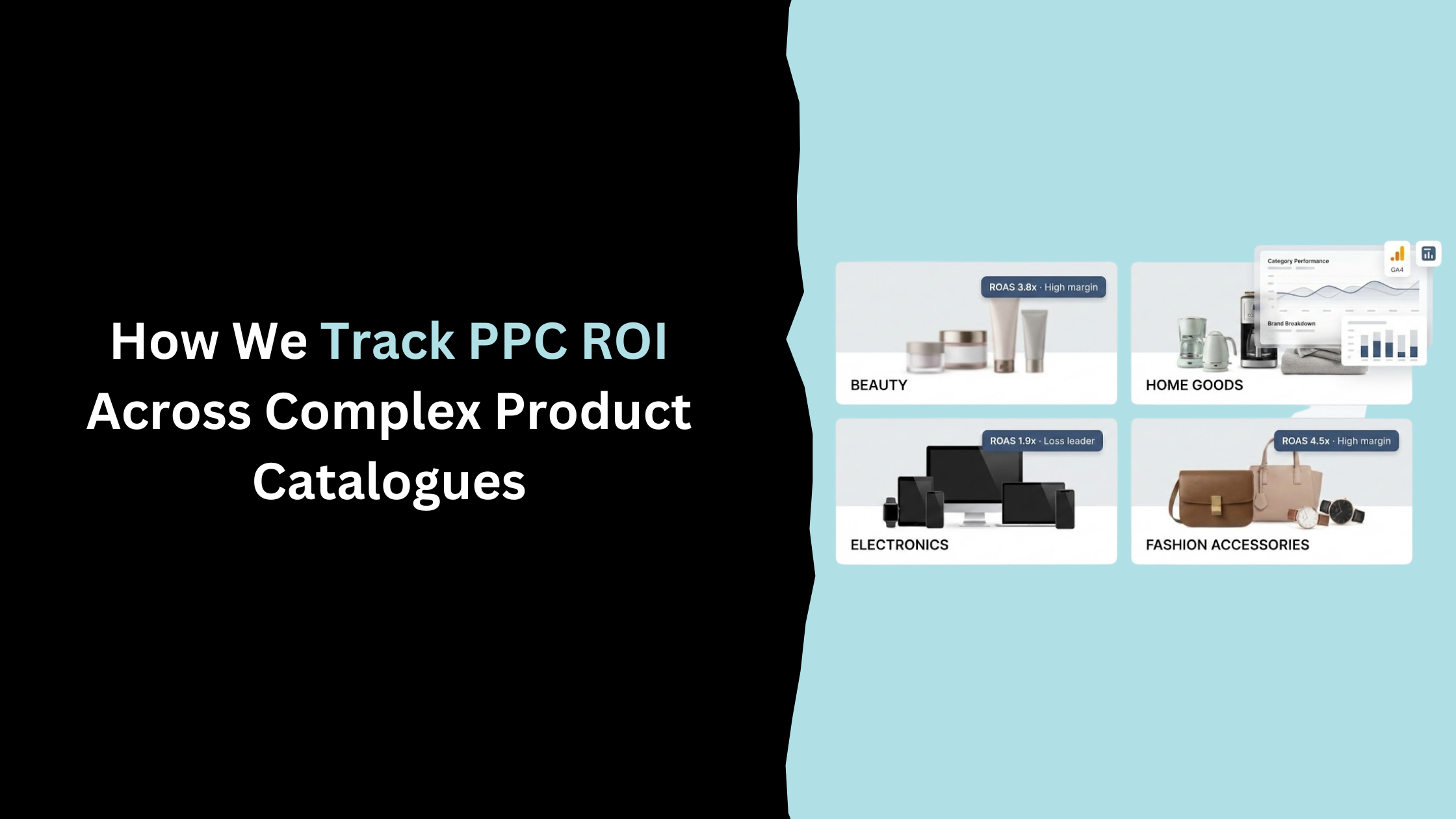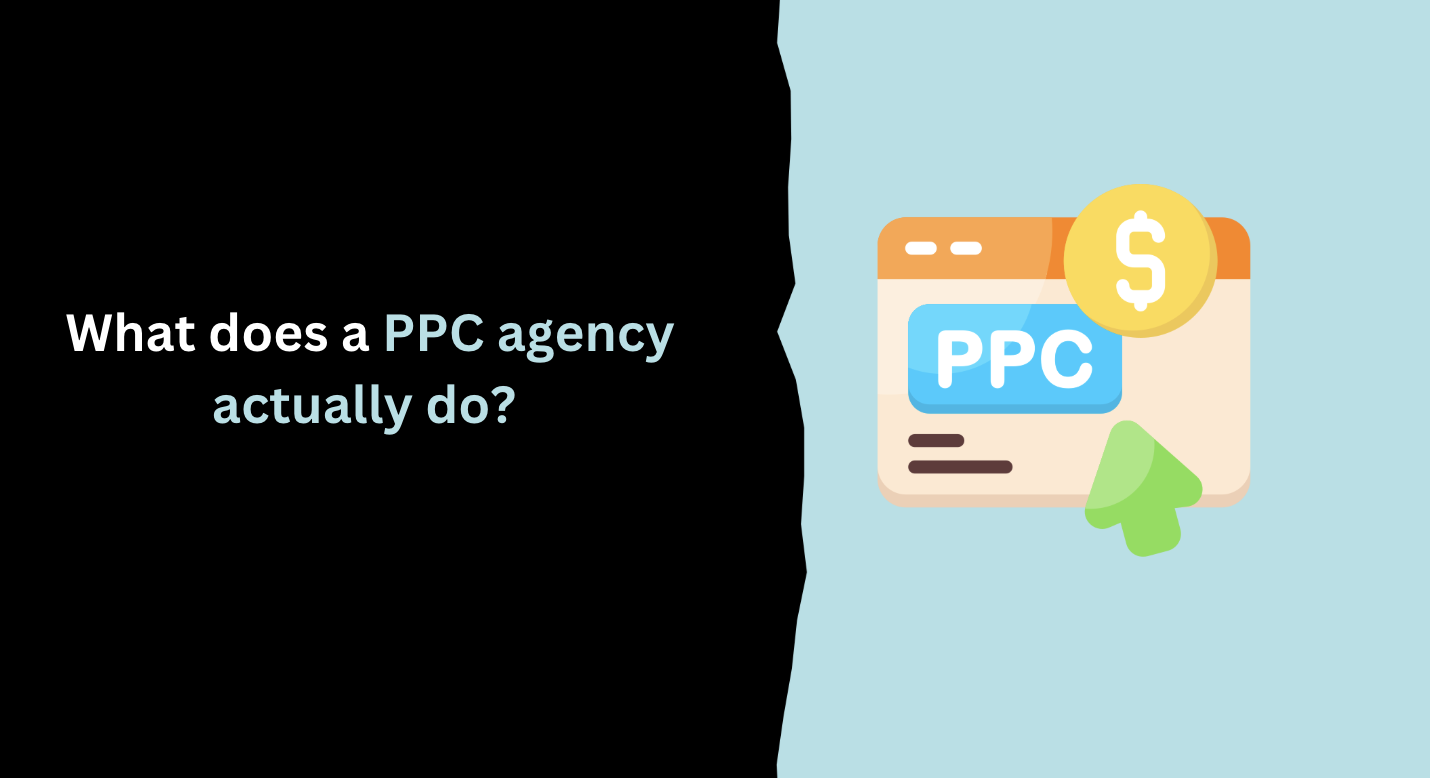Table of Contents
Upselling and cross-selling aren’t new, but the way we do them is.
Gone are the days of generic “you might also like” widgets and rigid if-this-then-that flows. Today, AI is making these strategies smarter, faster, and way more personal.
It’s not about pushing more stuff. It’s about showing the right product, at the right time, in the right way.
This article breaks down how machine learning, intent modelling, and generative tools are reshaping the eCommerce playbook, from the shopping cart to post-purchase emails, and even into voice commerce.
Let’s talk about what actually works now, and what’s just noise.
The Fundamentals of Upselling and Cross-selling
Upselling means offering a higher-end version of what someone’s already considering. Think: upgrading from a basic subscription to a premium plan or suggesting a better phone just before checkout.
Cross-selling suggests related items based on what’s in the cart. Like pitching a laptop sleeve when someone adds a MacBook, or recommending protein powder alongside a gym membership.
They both aim to increase order value, but they do it differently.
One nudges upward. The other nudges sideways.
Traditional Approaches vs. AI-Driven Strategies
Old-school upsell and cross-sell flows followed hard-coded paths.
"If product A, then suggest product B." That kind of logic tree worked... until it didn’t. Rigid rules rarely keep up with fast-changing customer behaviour.
Human-crafted rules miss nuance.
AI flips the script.
Instead of fixed sequences, you get dynamic, predictive flows powered by customer behaviour and real-time data. AI models can learn who’s likely to buy what, when, and why, without needing you to write out every possible scenario.
Segmentation? Automated.
Timing? Optimised.
Relevance? Sharper than ever.
AI doesn’t guess. It adapts. That’s the game changer.
Expanded Query Intent Table
Here’s how users actually search when they’re ready to be upsold or cross-sold:
Key AI Technologies Powering Intelligent Selling Flows
Machine Learning Models for Predictive Affinity
The smartest upsells aren't random. They're data-driven.
Machine learning models use collaborative filtering and dynamic product graphs to figure out what someone’s likely to want next. They’re not just looking at one shopper’s behaviour, but patterns across thousands of customers.
Purchase likelihood? It’s calculated in real time.
Every scroll, click, and cart add feeds the system more context. The result is a prediction engine that knows what people want before they do.
Real-Time Intent Classification Engines
These models read intent like a poker pro reads a table.
Edge-based systems run lightning-fast session analysis, detecting whether someone’s just browsing or ready to buy. They parse everything: search terms, navigation habits, even dwell time.
Natural language processing kicks in for search queries and filters. It doesn't just look for keywords; it deciphers intent.
This is what powers those spooky-accurate suggestions.
Personalised Recommendation Engines vs. Static Flows
Forget static lists. Static flows are dead.
Personalised engines are fluid. They adapt with every interaction; sequencing offers based on evolving behaviour and adjusting recommendations using reinforcement loops.
Behavioural retraining means the system gets sharper with time.
It learns what works, discards what doesn’t, and reconfigures the next suggestion accordingly.
You’re not just building a funnel. You’re building a feedback loop.
Building High-Impact AI Upsell Flows
Cart-Level Decision Points
Timing is everything.
AI uses real-time signals to decide when to suggest an upgrade, not just what to recommend. It considers how long someone hesitates, what’s already in their cart, and how likely they are to bite.
It’s not guessing. It’s using purchase probability thresholds and margin triggers to strike while the intent is hot.
If the upsell risks killing the conversion? It backs off.
This is upselling with restraint. And strategy.
Post-Purchase Cross-Sell Activation
The sale isn’t over when someone checks out.
Smart cross-sell flows kick in on thank-you pages, inside shipping confirmation emails, and even through follow-up ads. These aren't afterthoughts, they’re high-intent touchpoints.
The customer’s already in buying mode. You’re just keeping the momentum alive.
Better yet, you’re not starting cold. You’re building on what they’ve already said yes to.
A/B Testing & Reinforcement Learning Loops
What works today might flop tomorrow.
That’s why AI upsell systems run constant tests. They adjust based on what’s actually converting, not what sounds good on paper.
Reinforcement learning means the model adapts in real time, not just after a campaign wraps.
It scores what lands, tracks what doesn’t, and evolves accordingly.
Every upsell interaction becomes training data for a sharper, faster system.
Best Practices & Frameworks for Implementation
Mapping Product Relationships via Knowledge Graphs
Don’t rely on guesswork to connect products.
Knowledge graphs do it better, linking items through actual data, not gut instinct. They cluster products based on co-purchase behaviour, browsing history, and even shared attributes.
That’s how AI understands that a power drill and dust mask belong in the same cart.
Category logic gets baked in too, so related items don’t feel random. They feel obvious.
Schema Markup Example:
{
"@context": "https://schema.org",
"@type": "Product",
"name": "Running Shoes",
"category": "Footwear",
"isRelatedTo": {
"@type": "Product",
"name": "Moisture-Wicking Socks",
"category": "Apparel",
"productGroupID": "cross_sell_bundle_A"
},
"offers": {
"@type": "Offer",
"priceCurrency": "USD",
"price": "89.00",
"availability": "https://schema.org/InStock"
}
}Integration with CDPs and First-Party Data
Data sitting in silos isn’t helping anyone.
Connecting customer profiles from your CDP to upsell flows is non-negotiable. This is where first-party signals, like purchase frequency, brand preferences, or event participation, start pulling their weight.
Use schema.org's Product, Offer, and Event types to make it all machine-readable.
Because when Google understands your data, your recommendations get smarter—and more visible.
Ensuring NLP Compatibility for Voice and Chat Interfaces
People don’t always click. Sometimes they ask.
AI-powered selling flows need to work across screens and channels, whether it’s typed into a chatbot or spoken to Alexa. That means optimising for natural language, not just product names.
Structured FAQs help.
So do conversational CTAs that flow like a real exchange, not a sales script.
The goal? Make your AI sound less like a bot and more like a smart guide who gets it.
Voice/NLP FAQ Block Example:
{
"@context": "https://schema.org",
"@type": "FAQPage",
"mainEntity": [
{
"@type": "Question",
"name": "What is the difference between upselling and cross-selling?",
"acceptedAnswer": {
"@type": "Answer",
"text": "Upselling encourages buying a higher-end product. Cross-selling suggests complementary items."
}
},
{
"@type": "Question",
"name": "How can AI improve cross-sell recommendations?",
"acceptedAnswer": {
"@type": "Answer",
"text": "AI uses browsing patterns, product graphs, and real-time intent detection to suggest highly relevant add-ons."
}
}
]
}Case Studies and Performance Benchmarks
ASOS
ASOS built a machine learning system to forecast Customer Lifetime Value (CLTV), serving more than 12.5 million active users across eight country-specific platforms and offering over 85,000 products.
Rather than relying solely on hand-crafted rules, they incorporated neural embeddings learned from web and app browsing data. These customer vectors outperformed traditional random‑forest models using 132 features.
By recognising behavioural patterns and pairing them with product co‑occurrence logic, the system could drive smarter cross-sell suggestions, resulting in measurable uplifts in average order value.
The secret sauce? Deep understanding of each customer’s journey combined with pattern-driven product relationships.
Zalando
Zalando implemented an algorithm called ZSF‑c, a session-based model designed for recommending complementary fashion items in real time.
It’s not your typical collaborative filter. Instead of relying on item similarity alone, ZSF‑c learns from short-session signals, browsing behaviour, and category context. That makes it tailored to fashion use cases, where compatibility matters more than mere similarity.
The uplift was tangible:
- +8.2% improvement in Orders Recall@5 offline.
- +3.24% increase in purchased complementary items during an online A/B test on a platform with 28 million active users
Future Trends and Opportunities
Generative AI for Offer Crafting
We’re moving beyond templates and static deals.
Generative AI can now tailor microcopy in real time, adjusting tone, urgency, or even product framing based on emotional signals. A shopper in decision mode might get a concise, confident push. Someone on the fence? Softer, curiosity-driven phrasing.
This isn’t A/B testing. It’s adaptive persuasion.
It blends NLP and psychology to craft offers that feel right, not just look optimised.
Autonomous Flow Adaptation with RAG and LLM Fine-Tuning
The next generation of upsell engines won’t just react, they’ll self-improve.
By combining Retrieval-Augmented Generation (RAG) with fine-tuned language models, you can create adaptive funnels that rewrite themselves based on fresh insights. Think real-time prompt engineering that evolves with each interaction.
That abandoned cart flow? It rewrites itself based on what worked last hour, not last month.
Your funnel doesn’t just adapt, it learns how to adapt.
Voice-First Upsell Scenarios for Omnichannel Retail
“Would you like to add a matching case to your order?”
Voice is becoming a real upsell channel, especially on mobile, in-car, and smart home interfaces. And it demands a different kind of strategy.
No visuals. No scrolling. Just intent and timing.
That means your product graph, NLP models, and CTA design all need to be conversation-ready.
And frictionless. Because in voice commerce, you only get one shot to get it right.
Get in touch today
complete the form below for an informal chat about your business







.png)
